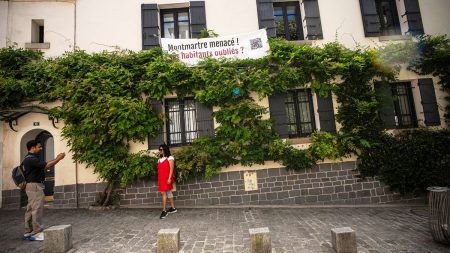The Japanese city of Kyoto is taking action to combat overtourism by closing off some private-property alleys in the famous geisha district of Gion. Local officials have received complaints about tourists crowding the narrow streets of the area, following tour guides around. Signs will soon be put up in both Japanese and English, warning pedestrians to stay out of the private roads. Those who violate the ban could face a fine of 10,000 yen, or about €62. The move is aimed at addressing the growing resentment towards overtourism in Kyoto, while still allowing public streets to remain open to visitors.
Gion is a district in Kyoto known for its picturesque teahouses where geisha and maiko apprentices perform traditional dance and music. The area is a popular spot for tourists to visit, capturing photos and witnessing the unique culture of the geisha. Complaints about overzealous tourists have been simmering for years, but were temporarily subdued during the COVID-19 pandemic. However, now that tourism is rebounding to pre-pandemic levels, the issue has resurfaced. More than 22 million visitors came to Japan last year, with experts predicting this year’s numbers could approach or exceed the 2019 total of over 31 million.
The decision to block off specific streets in Gion reflects the frustration of residents who feel overwhelmed by the influx of tourists to their neighborhood. The district is known for its historical charm and scenic beauty, making it a popular destination for visitors. However, the constant stream of tourists wandering the streets has disrupted the daily life of locals and detracted from the authentic character of the area. A statement from the local council emphasized that Kyoto is not a theme park, indicating a desire to maintain the cultural integrity of the city while still welcoming visitors.
The issue of overtourism in Kyoto is not unique to the city, as destinations around the world grapple with balancing the economic benefits of tourism with the preservation of local culture and heritage. Gion’s move to restrict access to certain streets is part of a broader conversation about sustainable tourism practices and the impact of excessive visitor numbers on communities. As Japan’s economy increasingly relies on revenue from tourism, finding a balance between meeting the needs of visitors and respecting the wishes of locals is crucial for maintaining the long-term viability of the tourism industry in the country.
Ultimately, the measures taken by Kyoto to address overtourism in Gion are a reflection of the challenges faced by cities around the world in managing the impact of tourism on their communities. By closing off private-property alleys in the geisha district, the city is signaling a commitment to preserving the cultural heritage and quality of life for residents of Gion. As the number of tourists to Japan continues to rise, finding sustainable solutions to address the negative effects of overtourism will be essential for ensuring that both visitors and locals can coexist harmoniously in popular destinations like Kyoto.









